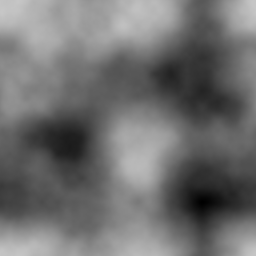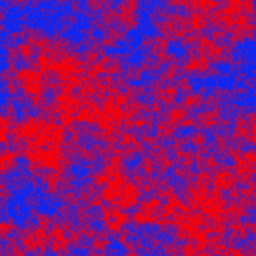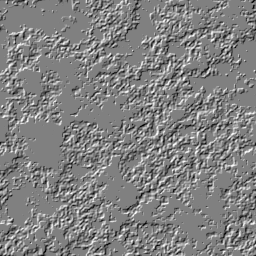Added a noise node (paints randomly pixels in black or white). Modified blur so direction can be selected (horizontal, verticla, or both). Updated code to use string formats instead of conversion + concatenation. |
||
|---|---|---|
| addons/procedural_material | ||
| doc | ||
| examples | ||
| test | ||
| .gitignore | ||
| LICENSE | ||
| README.md | ||
| default_env.tres | ||
| export_presets.cfg | ||
| generated_image.png.import | ||
| icon.png | ||
| icon.png.import | ||
| project.godot | ||
README.md
This is a tool based on the Godot game engine that can be used to create textures procedurally. It can also be used as a Godot addon (but there's no good reason for not using it as a standalone tool).
Its user interface is based on Godot's GraphEditor: textures are described as interconnected texture generators and operators.
Generators
Image
This node reads a bitmap from disk
Pattern
This generator creates a greyscale image by mixing an horizontal and a vertical pattern. Patterns can either be based on a sine, triangle, square, saw or "constant" waveform (i.e. the color as function of the x or y coordinate). The frequency (number of waves per unit) can be configure for both axes. Mix functions can also be configured.
Bricks
This generator creates bricks greyscale patterns.
The Bricks generator has 5 parameters:
- the number of brick rows
- the number of bricks per row
- the offset between even and odd rows
- the mortar space between bricks
- the bevel at the edge of the bricks
The bricks generator has 2 output:
- the first one will show mortal as black and bricks as white (bevel being shown as a gradient). It can be used as mask to mix brick and mortar, or to generate depth and normal textures
- the second one will just show a different color for each brick. It can be used to affect the brick's colors (and will be used in the future to offset textures).
Perlin Noise
The Perlin Noise generator creates a greyscale pattern and has 4 parameters:
- the horizontal and vertical scale of the first iteration
- the number of iteration
- the persistence (the weight ratio between 2 iterations)
Voronoi Noise
The Voronoi Noise generator creates greyscale patterns based on Voronoi diagrams and has 3 parameters:
- the horizontal and vertical scale (the number of feature points)
- the "intensity" of the noise (used to adjust the generated color)
The Voronoi generator has 3 outputs:
- The first output shows a greyscale image where intensity depends on the distance to the cell centers
- The second output shows a greyscale image where intensity depends on the distance to the cell edges
- The third output shows a different color for each cell.
Filters
Colorize
This filter accepts a greyscale image as input and is configured using a gradient. The output image is obtained by applying the gradient to the greyscale image (the example below shows a colorized perlin noise).
Blend
This filter accepts 2 inputs and an optional mask and blends the 2 images according to the selected blend algorithm.
Blur
This node applies a Gaussian blur to the input image.
Combine
This node accepts 3 greyscale images as inputs (one for each R, G and B channels) and combines them into a single image. It is useful to create textures that combine distinct features (for example Metallic and Roughness for Godot's Spatial materials).
Emboss
This node creates a lighting effect from a greyscale image, with a configurable light direction.
Normal map
This node creates a normal map from a greyscale height map.
Transform
This node applies a transform (translation, rotation, and scale) to its input image. Whether the input image is clamped or repeated when downsizing is configurable.
This can be combined with the pattern node to create a great variety of shapes.
Warp
This node deforms an input image according to the gradient of another image (generally perlin noise).
Miscellaneous
Material
This node defines the material shown in the 3d preview. It accepts textures for a subset of the PBR lighting model as implemented in the Godot engine. When exporting the material, each texture will be saved as a PNG file named after the project's name and a suffix for each material node input.
Export
This node can be used to export extra PNG files (for example a combined PNG to be used with Godot materials).







